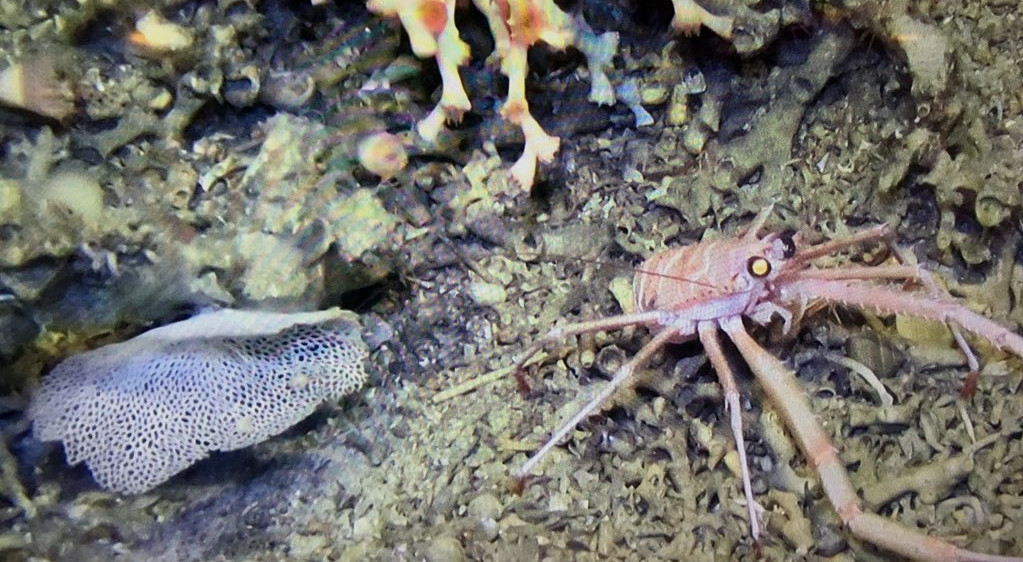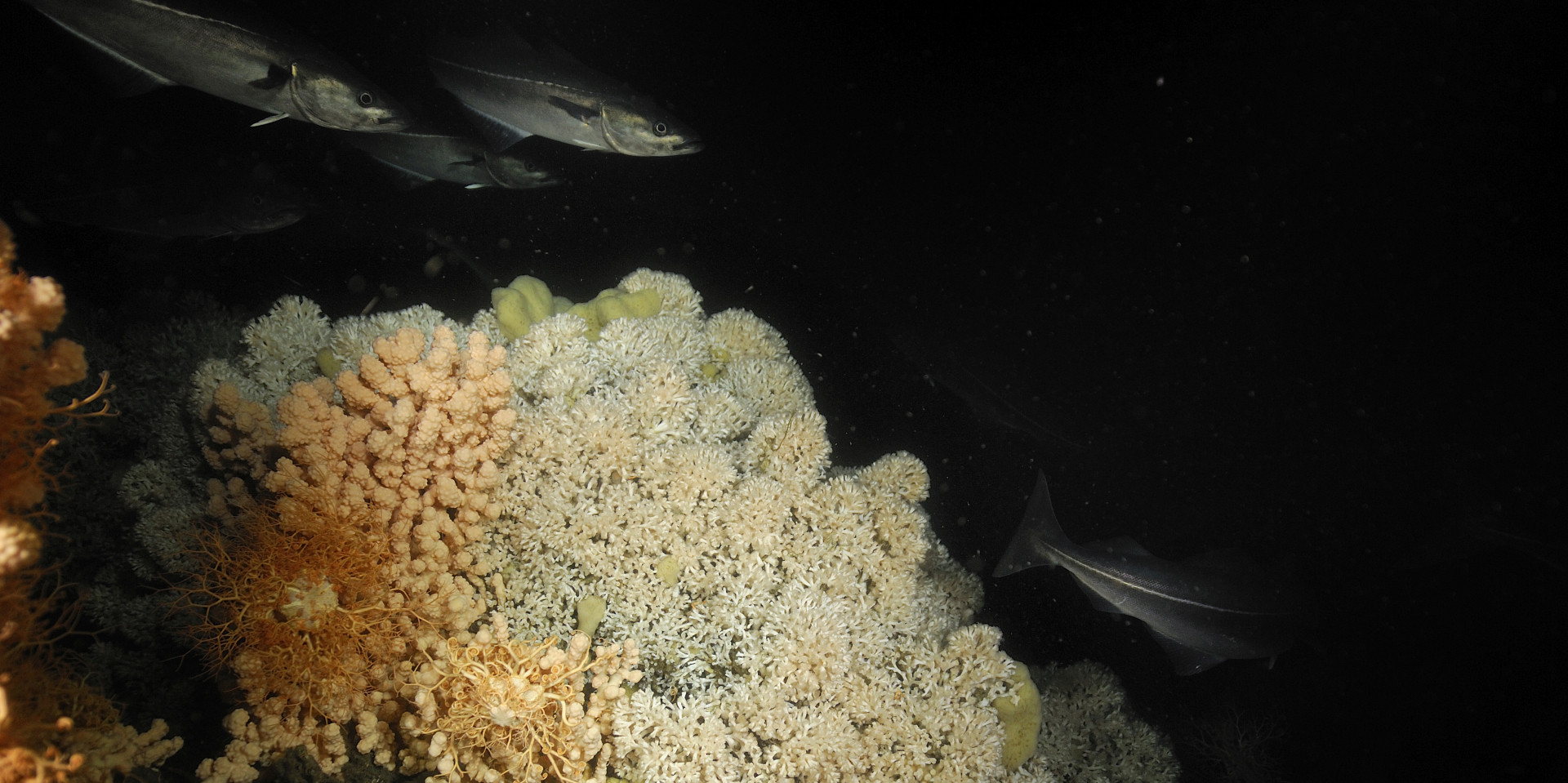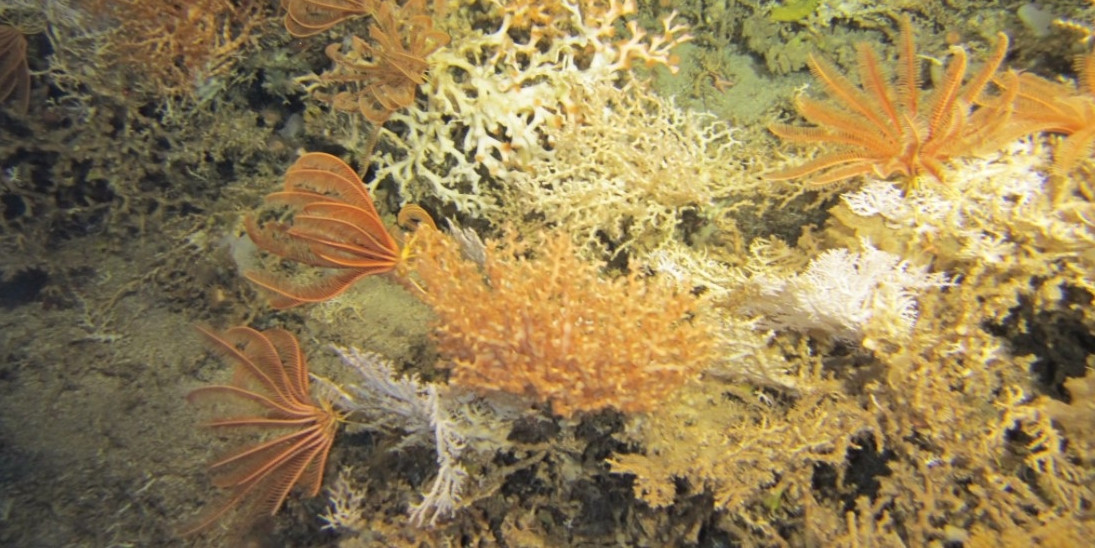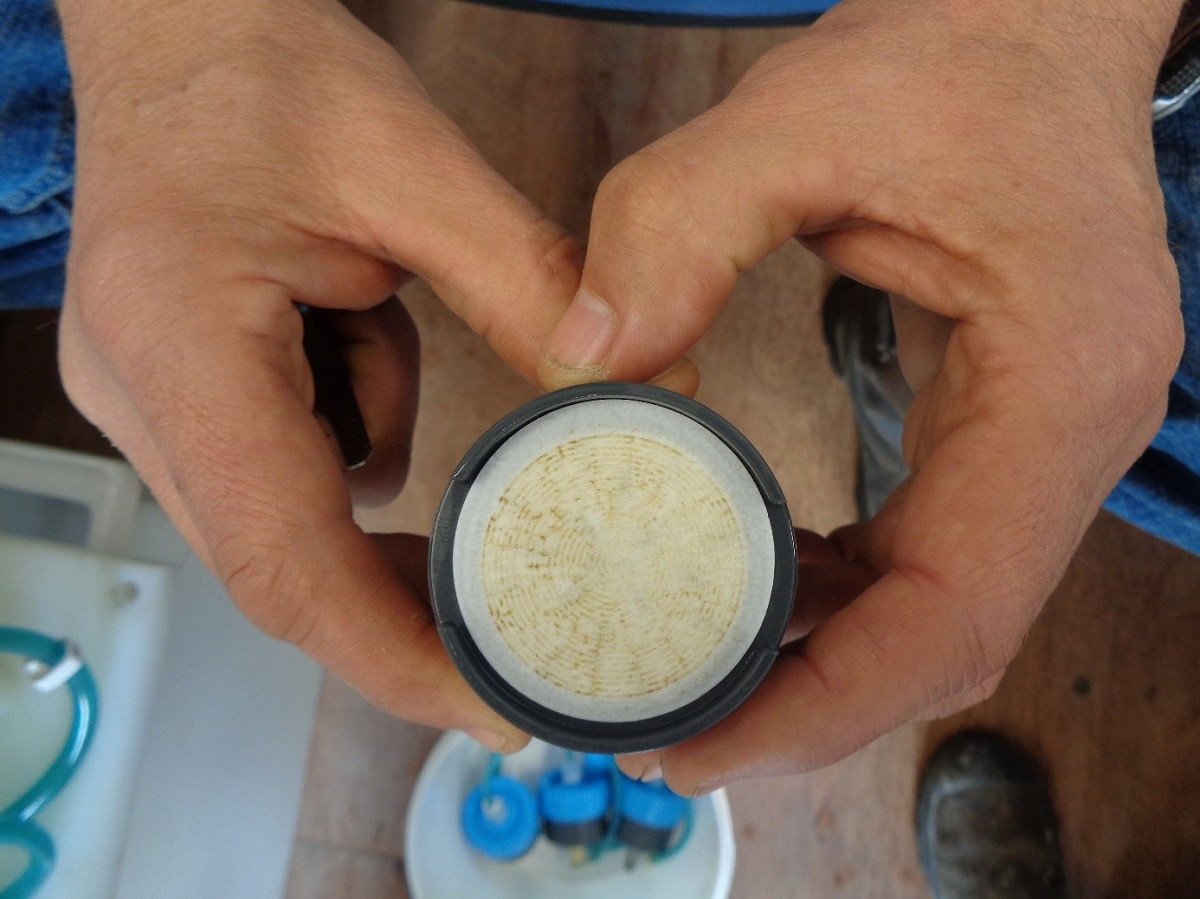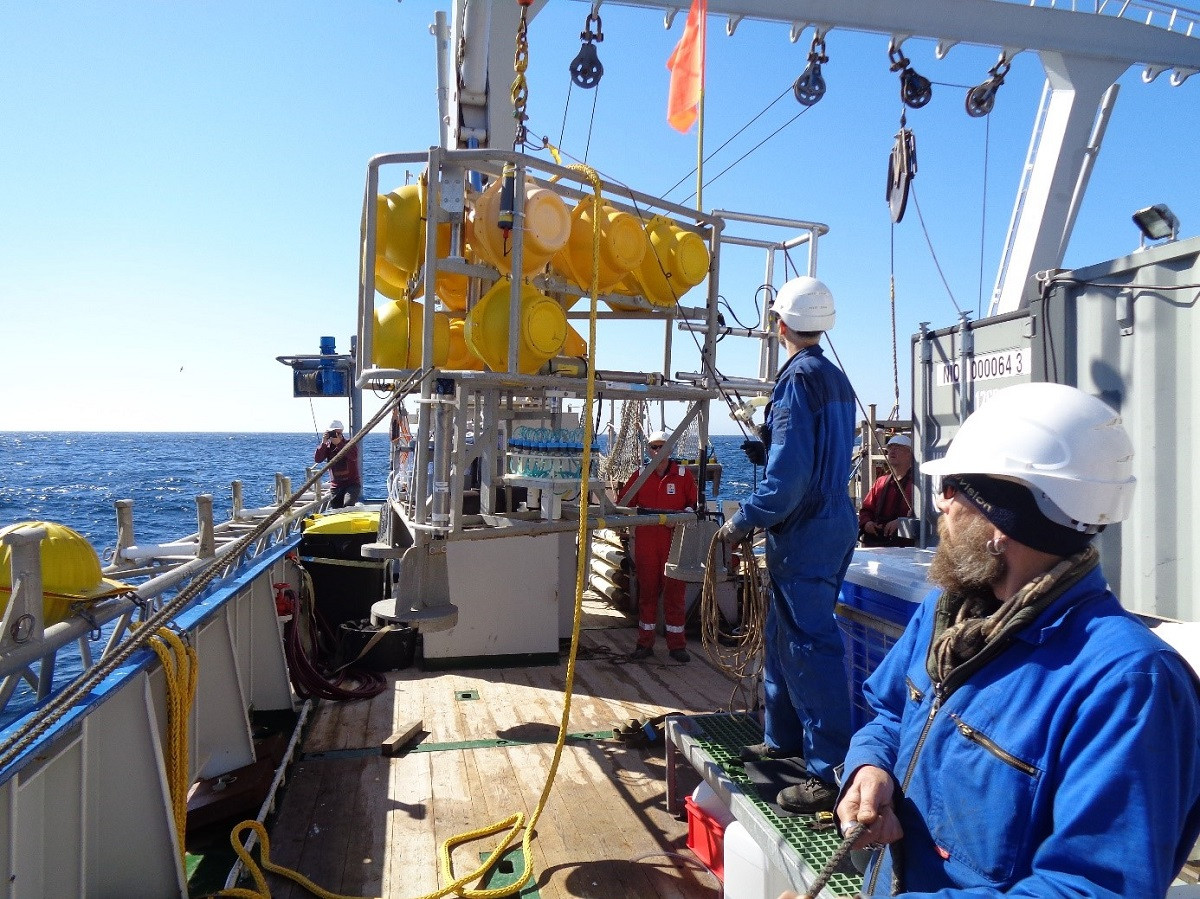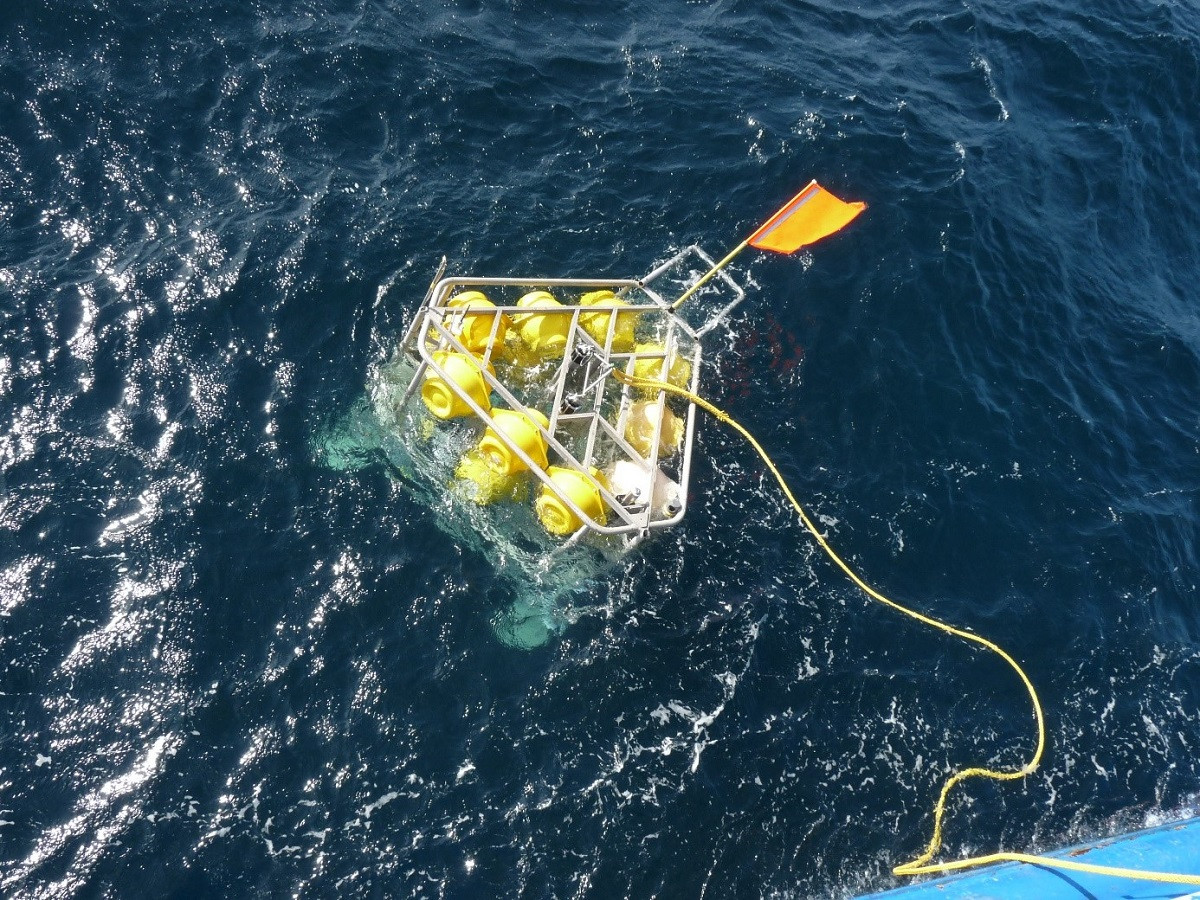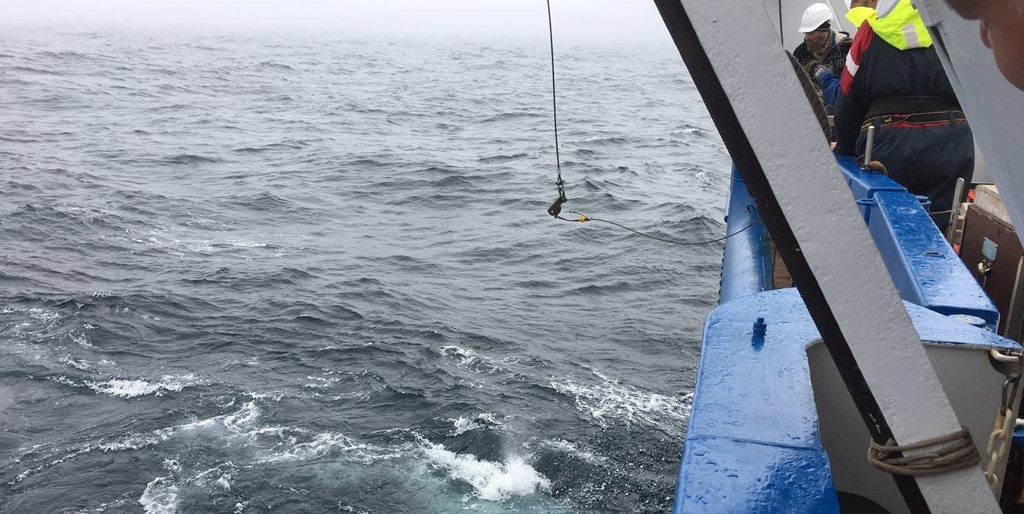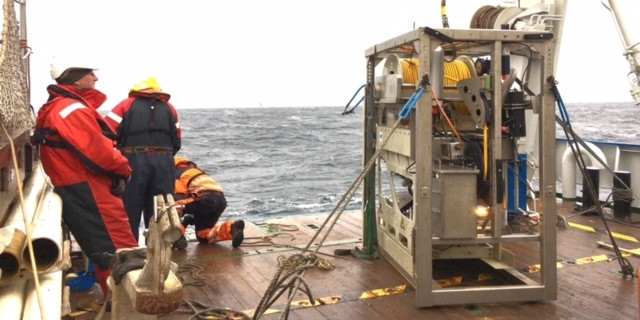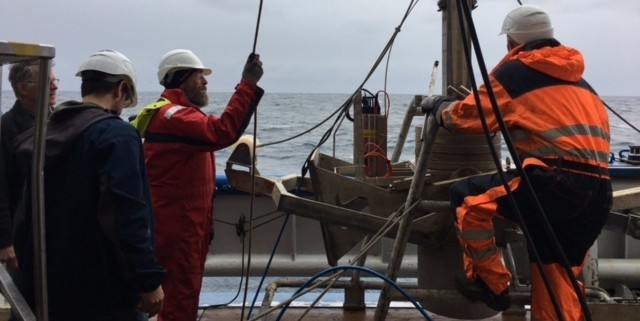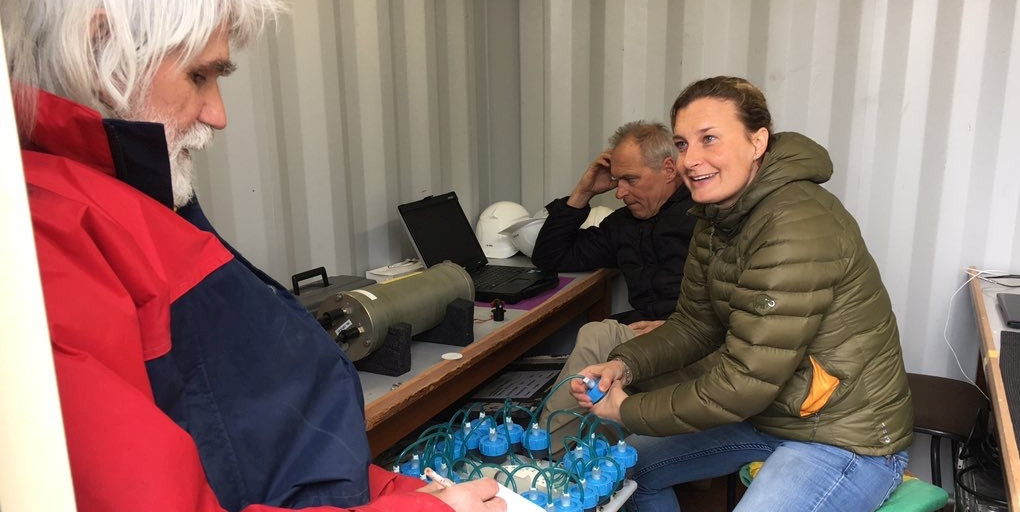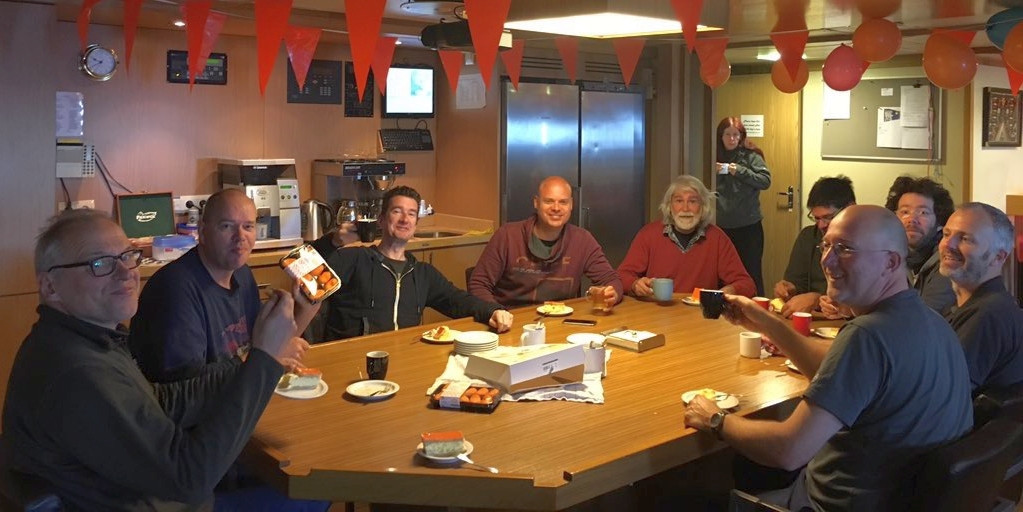April 24th - May 11th 2017
Blog intro by cruise leaders Gert-Jan Reichart & Dick van Oevelen
The deep seafloor harbours one of the most biodiverse ecosystems on our planet: cold-water coral reefs. Like their tropical counterparts, cold-water corals (CWCs) form structurally complex habitats that support a diverse and productive reef community. It is still paradoxical how such a rich ecosystem can thrive in the deep sea, an environment that is typically considered to be food limited.
A group of scientists, funded by NWO (VIDI program) and the EU (www.eu-atlas.org), collectively targeted this paradox during a cruise with the Dutch research vessel Pelagia. They visited Rockall Bank (West of Ireland) which has amongst the highest abundance of cold-water coral reefs in the world.
During this research expedition, they deployed instruments in the water column above the reef that will remain there for one year to study the processes that govern the delivery of organic matter towards the deep reefs. In addition, they used targeted sampling of reef organisms by the remotely operated vehicle Genesis (www.vliz.be/nl/rov-genesis) to determine how much and which food sources these organisms are utilising.
> You can follow our scientists on expeditions and doing fieldwork via Twitter:@NIOZatSea <
> You can track&trace the whereabouts of RV Pelagia here
Pumping for sPOM
May 11th, Final blog from our guest Sabena Blackbird, University of Liverpool
During the ATLAS cruise McLane Large Volume Water Transfer System Sampler (WTS-LV) in-situ pumps were deployed at stations at Haas Mound, Bank and Oreo Mound at three depths in the water column – 20mab, 120mab and surface.
The in-situ pumps filtered up to 1400 L of water through an acid-washed 50 µm nylon mesh before a pre-ashed glass fibre filter with a nominal pore-size of 0.7 µm collecting the suspended particulate organic matter (sPOM). Back in the labs at the University of Liverpool we will further investigate these two size fractions of the sPOM using a variety of instrumental techniques to gain a greater understanding of the food resources available to the CWCs. This may include relatively unaltered fresh phytoplankton sPOM as well as reworked material forced into the water column through tidal dynamics.
Particulate organic carbon and particulate nitrogen concentrations and molar C/N ratios will be determined via Elemental Analysis (EA). The organic chemical composition (quality) will be assessed by quantitative determination of lipid biological markers such as polyunsaturated fatty acids (PUFAs), alcohols, sterols etc. using Gas Chromatography – Mass Spectroscopy (GC-MS). Further compound specific isotope analysis of the lipids will involve Isotope Ratio – Mass Spectrometry (IR-MS)
Huge thanks to the ‘Pump Team Crew’ Cor, Ewout, Martin and Wim for their skill in pump deployment and recovery even during some choppy sea conditions!
Box core incubations
May 10th, blog by Evert de Froe
The coral mounds at Rockall bank are not only densely covered by cold-water corals, but also by Crinoids, Stylasterids and various sponges (cf. figure below). A lot of food, a scarce commodity in the deep sea, is necessary to sustain this abundant life. One method to quantify how much food is actually utilised, is by measuring the metabolic activity of the reef. On this expedition we use various methods, amongst others whole boxcore incubations. The Haja box core, developed by NIOZ, is used to sample 0.25 m2 of the coral reef and lift it on board of RV Pelagia. The box core is subsequently closed airtight and incubated in cooling containers for one or two days. This method gives a robust measure of the metabolic activity of the reef framework and allows us to compare oxygen consumption between areas, and methods.
Thanks to the skilful crew of the RV Pelagia, we managed to get seven successful box cores on deck. At this moment, the last incubation is running and the first results look promising.
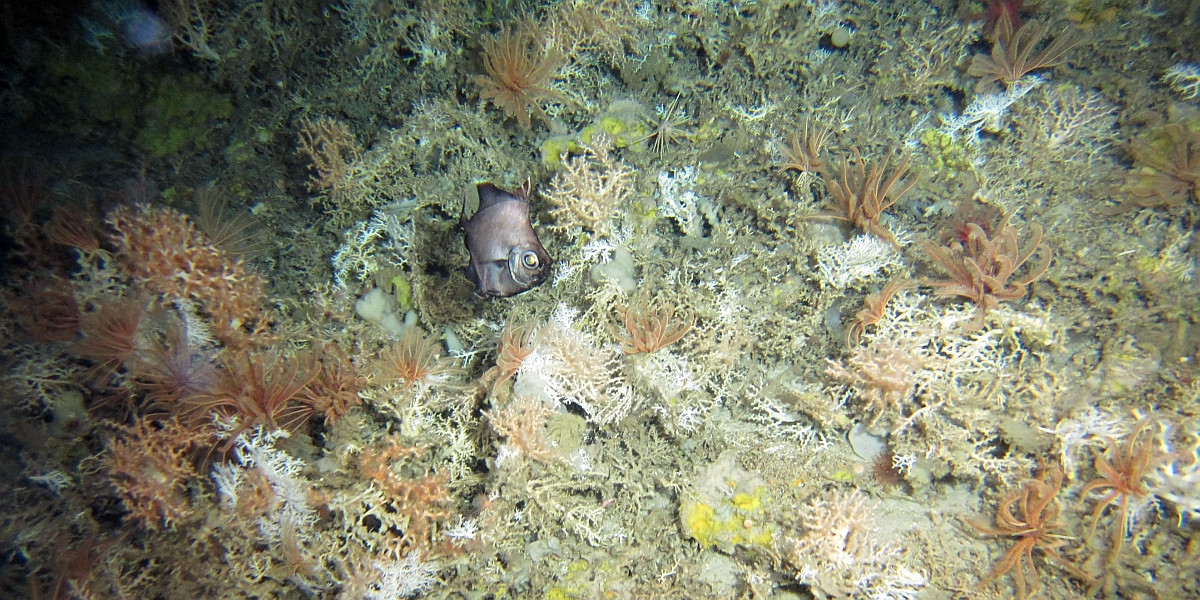
Communicating with a bottom lander at the seafloor
May 9th, blog by Furu Mienis
To measure the variability in environmental conditions near the seabed we deployed an ALBEX bottom lander at several mounds amidst the corals. The NIOZ-designed ALBEX lander (similar to a Mars lander) is a freefalling lander that can be deployed at the seabed for several days up to a year. It consists of an aluminium tripod frame on which different instruments can be mounted. In addition it contains two acoustic releases, 13 flotation spheres and a large bottom weight, which holds the lander at the seafloor. Since sound travels easily through water we recover the lander via an acoustic signal. By sending a sound with a specific frequency, the release mechanism will open and due to the flotation spheres the lander will slowly rise up to the seafloor after which we can recover it.
During the current cruise the lander is equipped with the AEC system (see blog below), a current meter to measure current direction and speed and an oxygen sensor. In addition we have mounted a particle pump to sample particles through time (one sample every 2 hours) to study changes in the type and amount of particles in the vicinity of the reef. These filtered samples will be analysed at NIOZ to determine if these particles can serve as food source for the corals and associated reef fauna.
We have also used a newly designed profile pump for the first time. This pump takes 6 samples from 20 cm up to 3 m above the seafloor in one go, allowing us to take samples in a gradient just above the seafloor. We use this pump system to measure if the coral framework changes the conditions in the water layer close to the bottom. Samples will show us if there is a reef effect that causes depletion or enrichment of dissolved as well as particulate matter. So far we have carried out 3 successful deployments and tomorrow we will recover the lander for the last time during this cruise.
Quantifying the metabolism of complex cold water coral communities in situ
May 7th, blog by Lorenzo Rovelli
During the ATLAS cruise an Aquatic Eddy Co-variance (AEC) system from the University of Southern Denmark will be used to quantify the metabolism of complex CWC communities in situ. The AEC system consists of an acoustic velocimeter (ADV), fast oxygen microsensors modules, and will be deployed on the NIOZ ALBEX lander. The main advantage of the AEC approach is that it provides an assessment of whole community metabolism over large areas of the mounds (up to 80 m2) without altering the local hydrodynamics and food supply. The aim is to characterize and compare the metabolism of the different communities located on the summit and flanks of the targeted mounds in the study area.
The AEC system was successfully deployed on coral rubble at the summit of Haas mound, but suffered some damage during the ALBEX lander retrieval under rough sea. Thanks to the help of the NIOZ technical staff, the system has been restored and the original safety cage rebuilt to better protect the instrument. The system was positively redeployed during the latest ALBEX lander deployment on the Haas mound flank and will be further deployed at the summit of Oreo mound.
Detecting the direction of food transport to deep-sea coral mounds
May 6th, blog by Gerard Duineveld
During the ATLAS cruise two mooring lines will be deployed each of which holds a profiling current meter (ADCP), sediment trap, and sensors to measure chlorophyll and particle density. In the meantime, one mooring line has been put on the seafloor at the shallow part of Rockall Bank at 450 m water depth. The spot is outside the area where mounds are found overgrown with cold water corals (Logachev Mounds). The other mooring line is scheduled to be deployed in a few days at a much deeper site on top of a coral mound densely populated by the cold water coral Lophelia pertusa.
Earlier measurements by NIOZ at the Logachev Mounds showed the coral mounds to be hotspots of carbon consumption and storage. This raised questions about where the food for the corals on the mounds is coming from: from the upper water column over the mounds in the form of vertically sinking particles, or from algae produced at the shallow parts of Rockall Bank and carried to the mounds by tidal currents. With the two moorings we intend to detect when and from which direction the food is transported towards the coral mounds.
Observing the seafloor with a Remotely Operated Vehicle
May 3rd, blog by Wim Versteeg
During this expedition, the Remote Operating Vehicle (ROV) “Genesis” from the VLIZ (a 1500m depth-rated ROV-Cherokee manufactured by Sub-Atlantic) is used for video-surveying and sampling of the organisms living at the cold-water coral reef bed. Last year this ROV was renewed and upgraded with single-mode glass-fiber transmission, HD-, Low Light- and Stills- cameras and High-Power and Wide-Angle LED-lights (see included photos). A GAPS-USBL-system is used for the real-time positioning of the RV-Pelagia, ROV, TMS and if needed landers during a ROV-dive. All these complex techniques have to function together to accurately observe and sample from a seafloor that is covered with corals.
We had some misfortune during the first two dives. First there was a 3000V short-cut in the system and during the second dive the LED-lights stopped working. Both problems were repaired by the joint VLIZ-NIOZ team and at this moment we are waiting for a window in the weather conditions to start the next dive. The team operating this vehicle consists of Ruud Groenewegen (Royal NIOZ), Michiel T’Jampens and Wim Versteeg (both VLIZ).
